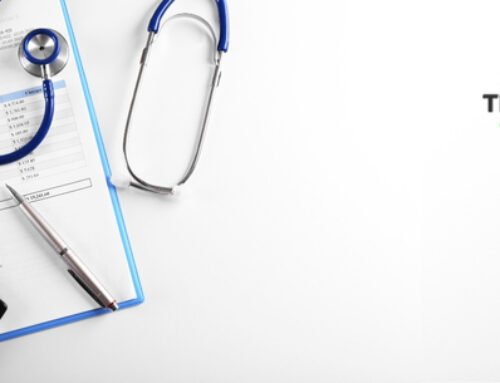Those who suffer from mental health issues like anxiety or depression. They often find it difficult to carry out their daily tasks. It can be difficult to diagnose and treat anxiety and depression. When both depression and anxiety are present. And it is common for people to experience symptoms of both.
We will discuss how to recognize if you have both depression and anxiety. How to get rid of anxiety and depression? What is the relationship between anxiety and depression? And What are the symptoms of depression in women?
Symptoms To Know About Both Anxiety and Depression
Persistent Negative Thoughts
Individuals with anxiety and depression may experience persistent negative thoughts. These ideas could be about their value, future, or past. These persistent, discouraging thoughts can be difficult to dispel. They also contribute to a sense of despair.
Changes in Appetite and Sleep
Both anxiety and depression can affect appetite and sleep patterns. People who have anxiety could find that they have an increased or decreased appetite. As well as trouble sleeping or oversleeping.
These changes can lead to fatigue, irritability, and a lack of energy.
Feelings of Guilt or Worthlessness
People with depression feel worthless and guilty. Like they aren’t meeting their own standards. These feelings can also lead to self-blame and a negative self-image. It can also make it challenging to complete daily activities.
Avoidance Methodologies
People with anxiety can reduce their symptoms by not going to social events or in public. People with depression may lose interest in things they used to enjoy. And stop spending time with other people. Avoiding tactics may result in isolation and worsen symptoms.
Physical Signs
Depression and anxiety can cause many unpleasant physical symptoms. These symptoms may last a long time and be hard to treat. Sometimes it’s not easy to know if a person’s physical symptoms are due to depression or anxiety.
Irritability or Restlessness
Irritability or restlessness can be brought on by both sadness and anxiety. People may experience anxiety, irritability, or difficulty relaxing. These signs and symptoms may make it difficult to focus or finish tasks.
Read More: How general medical advice works?
How do anxiety and depression feel together?
- Depression and anxiety are two of the most prevalent mental health issues. And they often co-occur in the same person.
- Factors can influence the manifestation of anxiousness and depression. Including stress, heredity, and chemical imbalances in the brain.
- Certain medications, such as antidepressants and anti-anxiety drugs. Should never take without close supervision from a qualified medical professional.
- You should never self-medicate with antidepressants or anti-anxiety medications. Always consult your doctor first. Speak therapy and cognitive-behavioural therapy (CBT) are two approaches. That may help depressed and anxious patients.
- Combination treatment, which includes both medication and therapy. May manage symptoms of depression and anxiety.
- Standardized instruments such as the Patient Health Questionnaire (PHQ-9). The Depression, Anxiety, and Stress Scale (DASS-21). The Generalized Anxiety Disorder 7 (GAD-7). They are used to assist in the diagnosis of depression and anxiety.
- It’s essential to seek help from a mental health professional. If you are experiencing symptoms of anxiety and depression. As they can provide an accurate diagnosis and effective treatment.
- Pills or medication alone are insufficient to manage anxiety and depression. A holistic approach that includes lifestyle changes, therapy, and medication may be necessary.
How to get rid of anxiety and depression?
- Visit a mental health expert like a therapist or psychiatrist. To get a proper diagnosis and the best possible care.
- Telehealthdr is a virtual healthcare platform. That connects patients in need of mental health care. With qualified professionals by video chat. Which includes therapists and psychiatrists.
- If you’re experiencing anxiety or depression, you might want to take medication. Such as antidepressants or anti-anxiety drugs. They can help balance brain chemistry and reduce symptoms. Discuss the drug options offered in your nation. Such as anxiety depression medication in Australia. With your doctor or mental health professional.
- See your mental health physician about herbal supplements. Chamomile tea, exercise, meditation, yoga, and other natural treatment for depression and anxiety. But, before using any natural remedies, it’s crucial to consult your doctor. As they can interfere with your medicine or have potential adverse side effects.
- Seek professional help from a therapist who specializes in depression. They will be able to guide you through your symptoms using a variety of techniques. Such as talk therapy and cognitive-behavioural therapy (CBT). Telehealthdr provides convenient, online therapy sessions with licensed professionals. For those who cannot maintain treatment due to time or transportation constraints.
- There are two alternatives to traditional treatments. Transcranial magnetic stimulation (TMS) and electroconvulsive therapy (ECT). Both are considered the best options for depression treatment.
- Improve your mental health by making changes to your lifestyle. Such as getting more sleep, eating healthier, and decreasing stress.
- Joining a support group for people with depression and anxiety. It might make you feel more connected to the community and less alone.
- Self-care strategies include scheduling me-time, pursuing hobbies, or spending time with loved ones. Taking care of yourself takes time and effort to recover from depression and anxiety.
Symptoms of depression in women include:
- Negative emotions that don’t go away.
- Loss of enthusiasm for pleasurable pursuits.
- Insomnia or excessive daytime sleepiness.
- Shifts in food intake or body mass index.
- Weakness or exhaustion.
- A sense of shame or guilt.
- Difficulty focusing or choosing is a symptom of “foggy brain depression.”
- Repeated depressive attacks or suicidal ideation.
How is depression in women diagnosed and treated?
- Diagnosis often involves a thorough evaluation by a mental health provider. Who may use tools such as the DSM-5 criteria to assess symptoms?
- Depression medication in Australia is one choice among many possible treatments. Which can include therapies and pharmaceuticals. Therapists may use cognitive behavioural therapy (CBT) and interpersonal psychotherapy (IPT). As two examples of therapeutic approaches. Antidepressants, anti-anxiety drugs, and mood stabilizers are useful for the treatment of depression.
Conclusion
Last but not least, remember that anxiety and depression are complex conditions. that have complex relationships with one another. People are able to improve their quality of life and learn how to better manage their symptoms. When they receive treatment and support. People who are in need of anxiety treatments should connect with online doctors. Through the use of an online platform called Telehealthdr. Get help as soon as possible if you or someone you care about is struggling with anxiety or depression.
FAQs
What is seasonal affective disorder?
Seasonal affective disorder (SAD) happens during the fall and winter months. When there’s less sunlight, it’s a type of depression.
What are the different types of depression?
Depressive disorder, persistent depressive disorder, bipolar disorder, and seasonal affective disorder.
What is the relationship between anxiety disorder and clinical depression?
Anxiety disorders and clinical depression often coexist, with symptoms of both conditions.
How can I determine if I have anxiety and depression?
A mental health professional can provide an accurate diagnosis of anxiety and depression.
Is there medication available for treating anxiety and depression?
Antidepressants and anxiety medications are available. A mood stabilizer, an antidepressant, and an anti-anxiety medication.






Leave A Comment